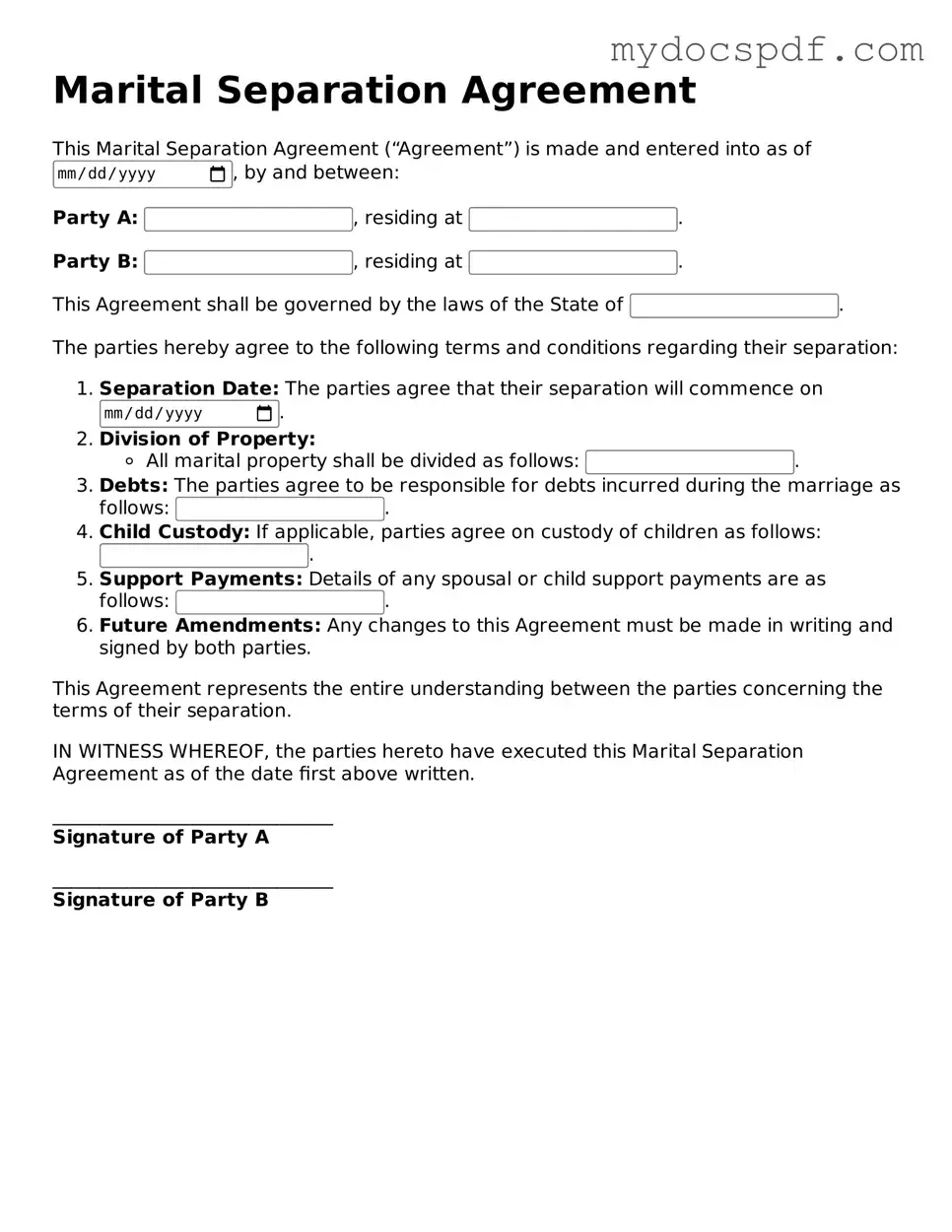Attorney-Approved Marital Separation Agreement Template
A Marital Separation Agreement is a legal document that outlines the terms and conditions agreed upon by spouses who wish to live apart while remaining legally married. This agreement typically addresses issues such as property division, child custody, and support obligations, helping to minimize conflict during a challenging time. Understanding the components of this form can provide clarity and direction for both parties as they navigate their separation.
Access Editor Here
